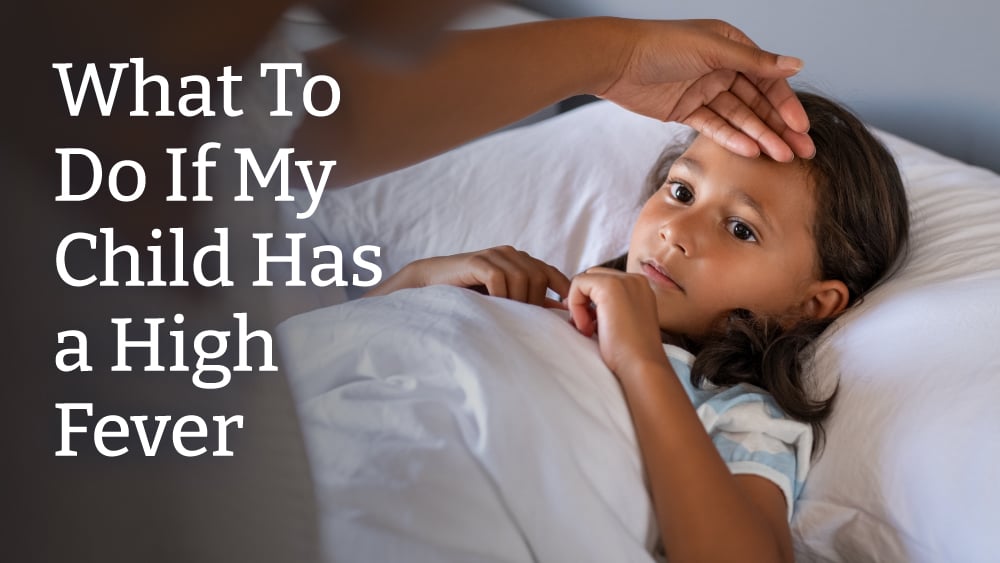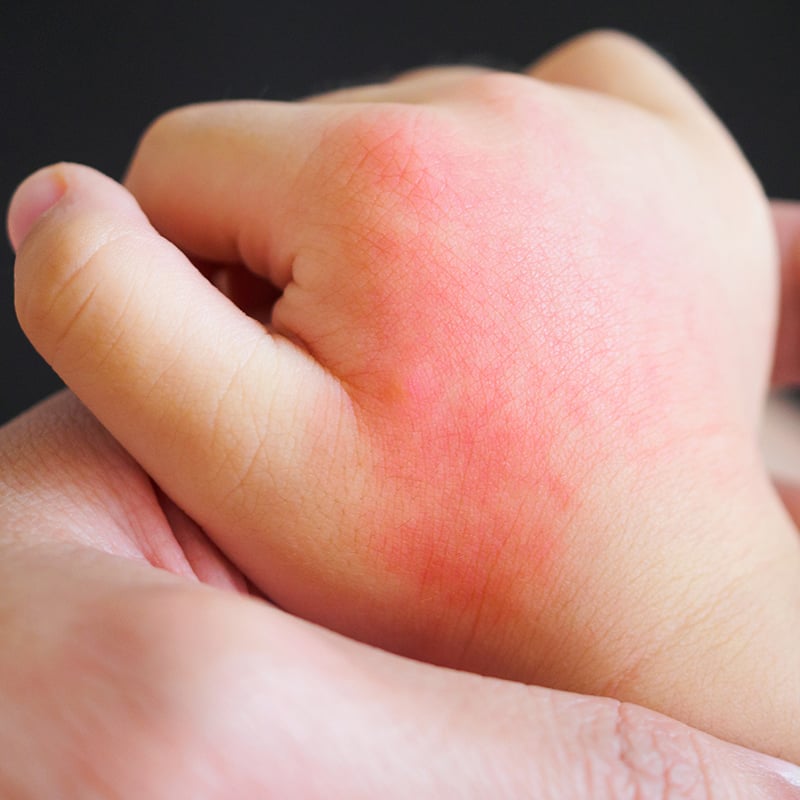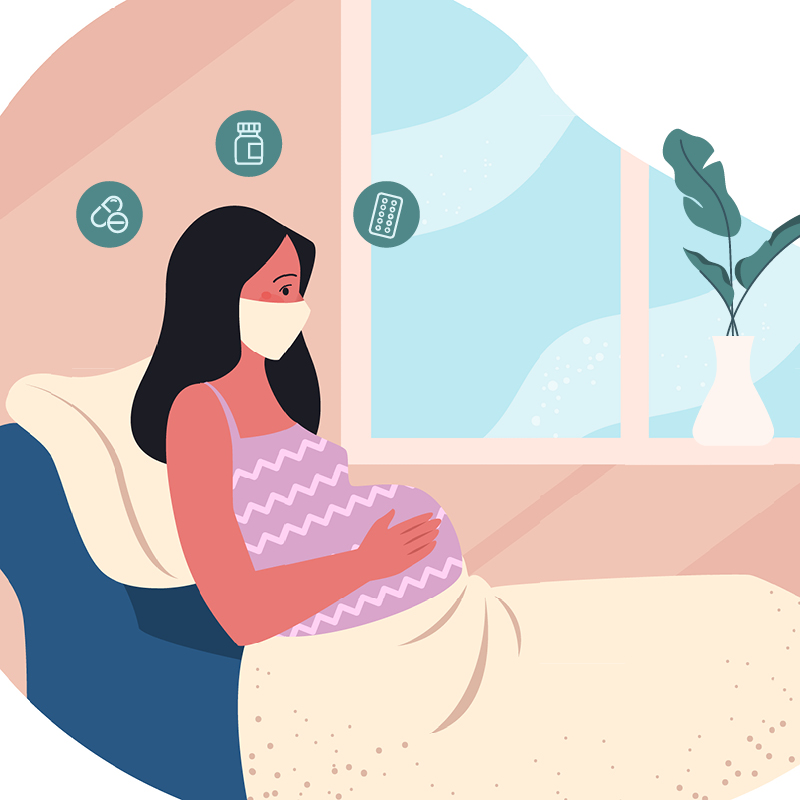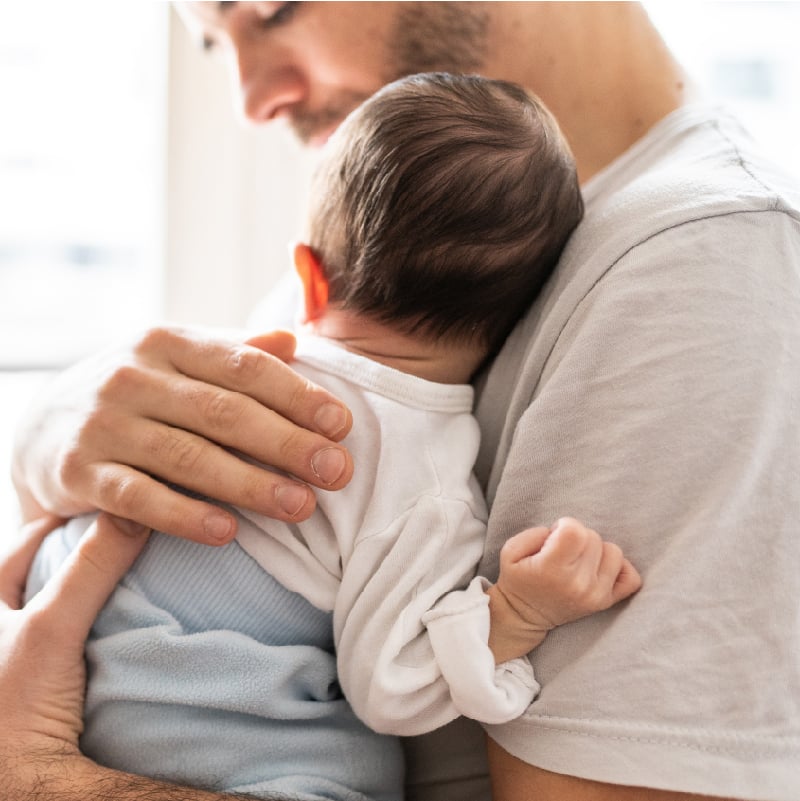All children will have fevers from time to time and are one of the top reasons why a child is seen by a pediatrician. As common as fevers are, they can be scary for parents.
As a pediatrician with Rochester Regional Health, Amanda Lloyd, MD, has received plenty of calls and visits about children’s fevers. She offers her perspective of what to expect, what parents should do, and when to call your pediatrician.
What is a fever?
The human body is regulated at an average internal temperature of 98.6°F. A part of the brain called the hypothalamus is constantly working to keep the body at that temperature, similar to a thermostat.
Fevers themselves are not illnesses, but a sign or a symptom of other issues in the body. Most fevers are from infections. When an individual has a fever, this is a sign that the brain is increasing the temperature inside the body to activate the immune system. Along with other immune responses, a higher internal temperature makes your body a less hospitable environment for viruses, bacteria, or other pathogens. Your body will also make more white blood cells and send out chemicals to fight infections.
Taking a temperature
Methods for taking temperatures vary and are typically based on age.
For a child under the age of 6 months, a rectal thermometer will give the most accurate results.
Children ages 6 months and older can use most other types of thermometers – oral, ear, and forehead are the most common. All of these styles have a similar degree of accuracy.
The forehead thermometers work by scanning the body temperature of the temporal artery on the forehead. If a child has been outside in the cold or in the heat, wait a short amount of time before taking their temperature. The effects of the outside environment on the skin can affect taking a temperature by that method.
Oral thermometers can be difficult with children under the age of 4 years, as younger children have a harder time keeping it pressed against their tongue. Pediatricians recommend trying other types of thermometers instead.
Mild vs. high fevers
A fever is considered a body temperature above 100.4°F (38°C). Temperatures around this range are referred to as ‘mild’ fevers.
A high fever is a temperature in the range of 102-104°F (38-40°C).
There is not any specific length of time that an individual needs to have a high body temperature in order for it to be considered a fever.
Concerning symptoms – should I call my pediatrician?
Should you call your pediatrician if your child spikes a fever? That depends on the child’s age and other signs/symptoms.
For babies under the age of 3 months, pediatricians will want to know immediately any time an infant’s rectal temperature rises above 100.4°F (38°C).
“Their immune systems are not as developed as older children’s immune systems, so this can be concerning,” Dr. Lloyd said.
Most children who are over the age of 3 months can tolerate a fever for a day or two, if they are staying hydrated, active, and alert.
General guidelines
Call your doctor right away if you have an:
- infant younger than 3 months old with a rectal temperature of 100.4°F (38°C) or higher
- older child with a temperature of higher than 102.2°F (39°C)
Also call if an older child has a fever of lower than 102.2°F (39°C) but also:
- chronic medical problems, such as cancer, lupus, sickle cell disease, heart issues, or is taking immune system suppressing medications (like steroids)
- frequent fevers, even if they only last a few hours each night
- lasting diarrhea or repeated vomiting
- rash
- refuses fluids or seems too ill to drink adequately
- signs of dehydration (peeing less than usual, not having tears when crying, less alert and less active than usual)
- specific complaint (like a sore throat or ear pain or pain with urination)
- still has a fever after 24 hours (in kids younger than 2 years old) or 72 hours (in kids 2 years or older)
Seek emergency care if your child shows any of these signs:
- blue lips, tongue, or nails
- crying that won't stop
- extreme irritability or fussiness
- infant's soft spot on the head seems to be bulging out or sunken in
- leaning forward and drooling
- limpness or refusal to move
- moderate to severe belly pain
- rash or purple spots that look like bruises on the skin (that were not there before your child got sick)
- seizure
- severe headache
- sluggishness and trouble waking up
- stiff neck
- trouble breathing that doesn't get better when the nose is cleared
Controlling fevers
Fevers can be controlled using both medicinal and non-medicinal methods. Pediatricians suggest using these measures as a way to relieve your child if he or she is feeling uncomfortable due to the fever.
“There is not a set temperature where we say, ‘You should give your child medicine now,’” Dr. Lloyd said. “It is more about keeping an eye on how your child is acting.”
Medicines most commonly used to control fevers are acetaminophen and ibuprofen. Dosage for children should be based on their weight, not their age.
Aspirin is no longer recommended as a fever control measure.
Non-medicinal measures to reduce fevers include:
- Drinking plenty of fluids to compensate for dehydration
- Dressing in light layers to adjust for heating & cooling as needed
- Lukewarm baths
Parents and caregivers are not advised to use alcohol baths or alcohol wipes, as the effects only make individuals feel cooler but do not actually reduce the body’s temperature.
What else?
Everyone gets a little grumpy when they have a fever. Luckily, most fevers only last a few days, then your child should be back to normal.








